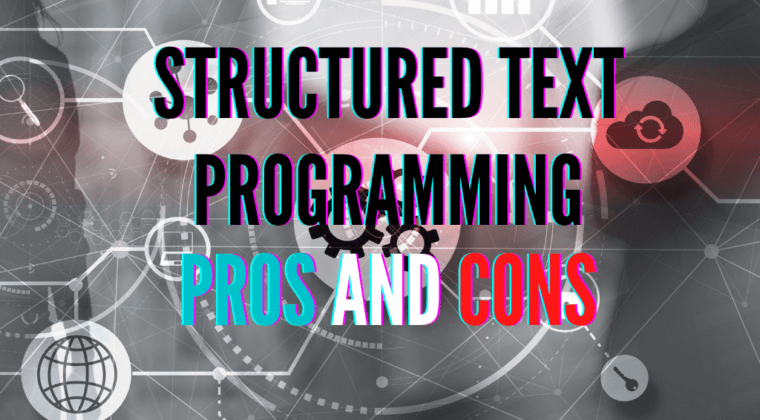
What is Structured Text Programming?
Structured Text Programming is text-based programming system compared to the graphics-based ladder diagram or Function Block Diagram.
It may seem better to utilize a graphic-based programming language but for experts, that is only true for smaller PLC programs. Structured Text Programming will take up much smaller space, and the flow will be easier to understand.
Pros of Structured Text (ST) programming:
- ST Programming code can easily be replicated (copy-paste) between various PLC types and brands.
- It is the most advantageous PLC language for estimations, formulas and algorithms, and for dealing with Big Data.
- PLC solutions are more popular today than 20 years prior.
- Numerous widespread programming dialects (C++, C#, VB, PASCAL) share likenesses with the ST program structure.
- Other PLC language (LD, SFC, and FBD) require portions of the program to be written in ST at any rate.
- Documentation of the ST programming code requires less space during documentation, portrayal and printing contrasted with other PLC programming dialects.
- It is the most straightforward PLC language to via comments in the program code or through GIT or Subversion.

Cons of Structured Text (ST) programming:
- Many specialists and electrical technicians are just equipped for programming in LD.
- As a specific degree of involvement with organizing a program is required, programming in ST can be very confusing.
- Inexperienced individuals might experience issues in troubleshooting in a ST program.
- Small (Micro) PLCs do typically not allow ST Programming.
- It isn’t typically conceivable to apply ST Programming in a safety PLC.
- Reaching master level in ST programming frequently takes three to five years.
Article inspired from linkedIn top stories
Contact us for further information
